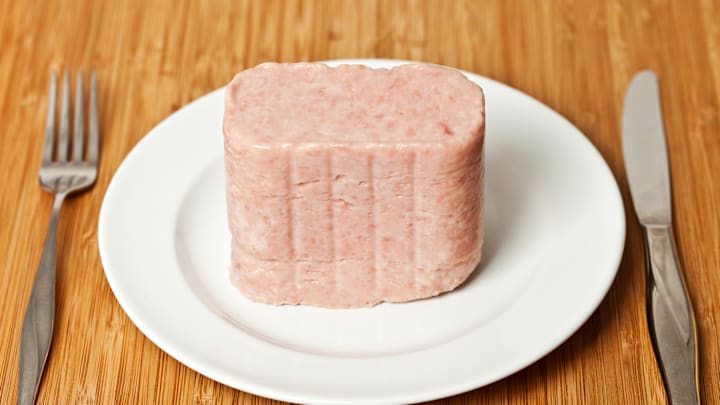Since SPAM was invented in 1937, the brand name has become synonymous with the bogus messages that clog our inboxes. This may have something to do with SPAM's mysterious identity. If the processed meat-in-a-can isn't technically ham, what is it, exactly?
As Reader's Digest reports, SPAM isn't as complicated as its reputation would have you think. The recipe consists of six ingredients, the first of which is pork shoulder and ham (together considered one ingredient). The other components are salt, water, potato starch, sugar, and sodium nitrite. That last item is the only one that would seem out of place in a home kitchen, and it's used as a preservative. According to the makers at Hormel, SPAM stands for "spiced ham," though it's unclear where the "spiced" element is in this list.
To create a uniform, pink pork loaf, Hormel processes these ingredients together. First the pork is ground up, then it's mixed with everything else for 20 minutes. The mixture is poured into the metal cans, which are then vacuum-sealed, cooked, and cooled, resulting in a product that perfectly fits its package.
Hormel has been using the same recipe for SPAM for nearly a century. Though the meat can't be described as farm-to-table fresh, it does have some advantages over the pork you buy from the butcher. The air-tight packaging and high sodium content make it a safe and convenient option when fresh meat and refrigeration are hard to come by. For this reason, SPAM was popular with the U.S. military in the 20th century, and they spread it across the world through wars and occupations. Today, SPAM is embedded in the local cuisines of the Philippines, South Korea, Hawaii, and the UK.
SPAM really does contain ham, but not every alternative product comes that close to the food it emulates. Learn what imitation crab is really made of here.
[h/t Reader's Digest]
